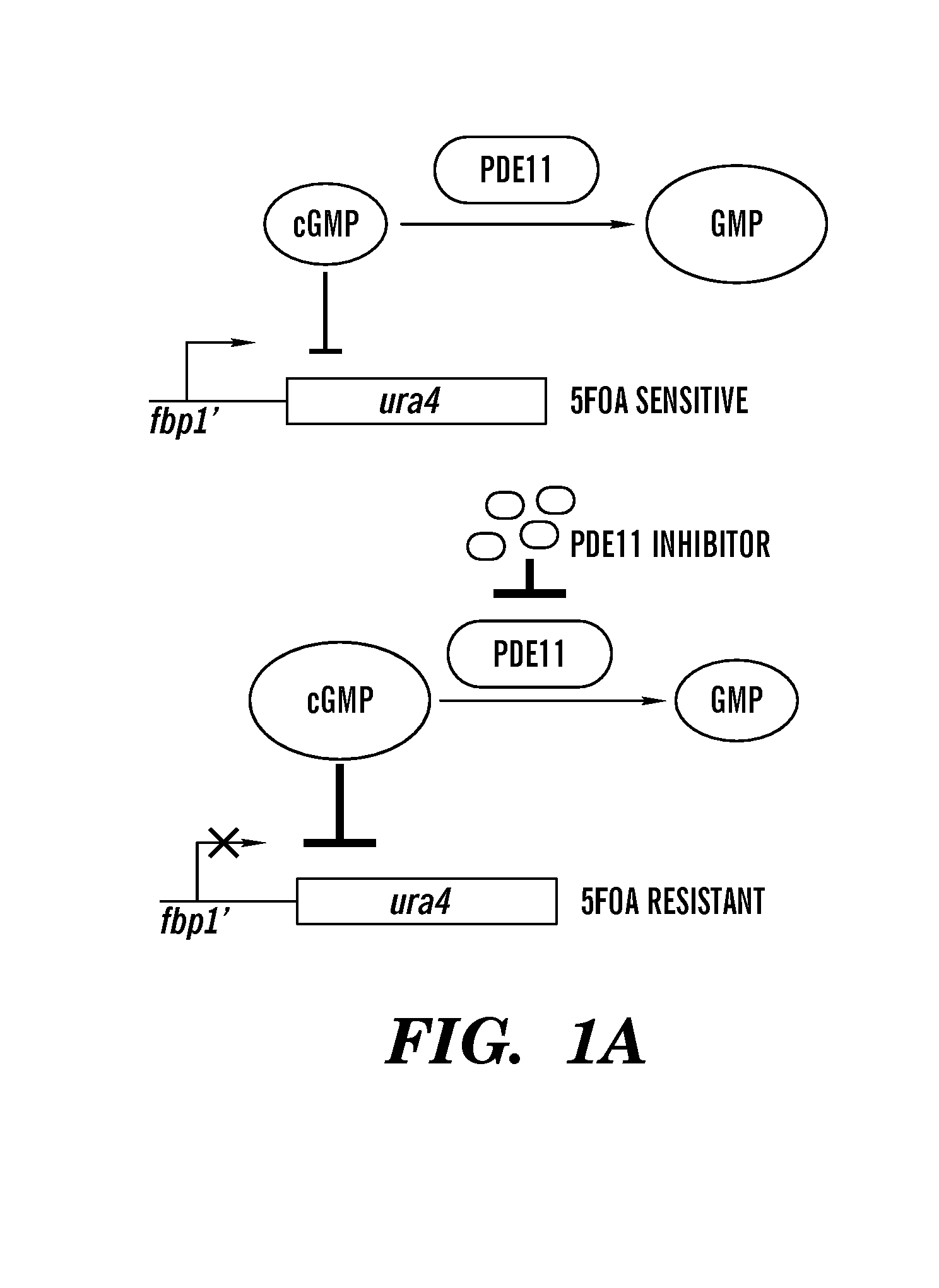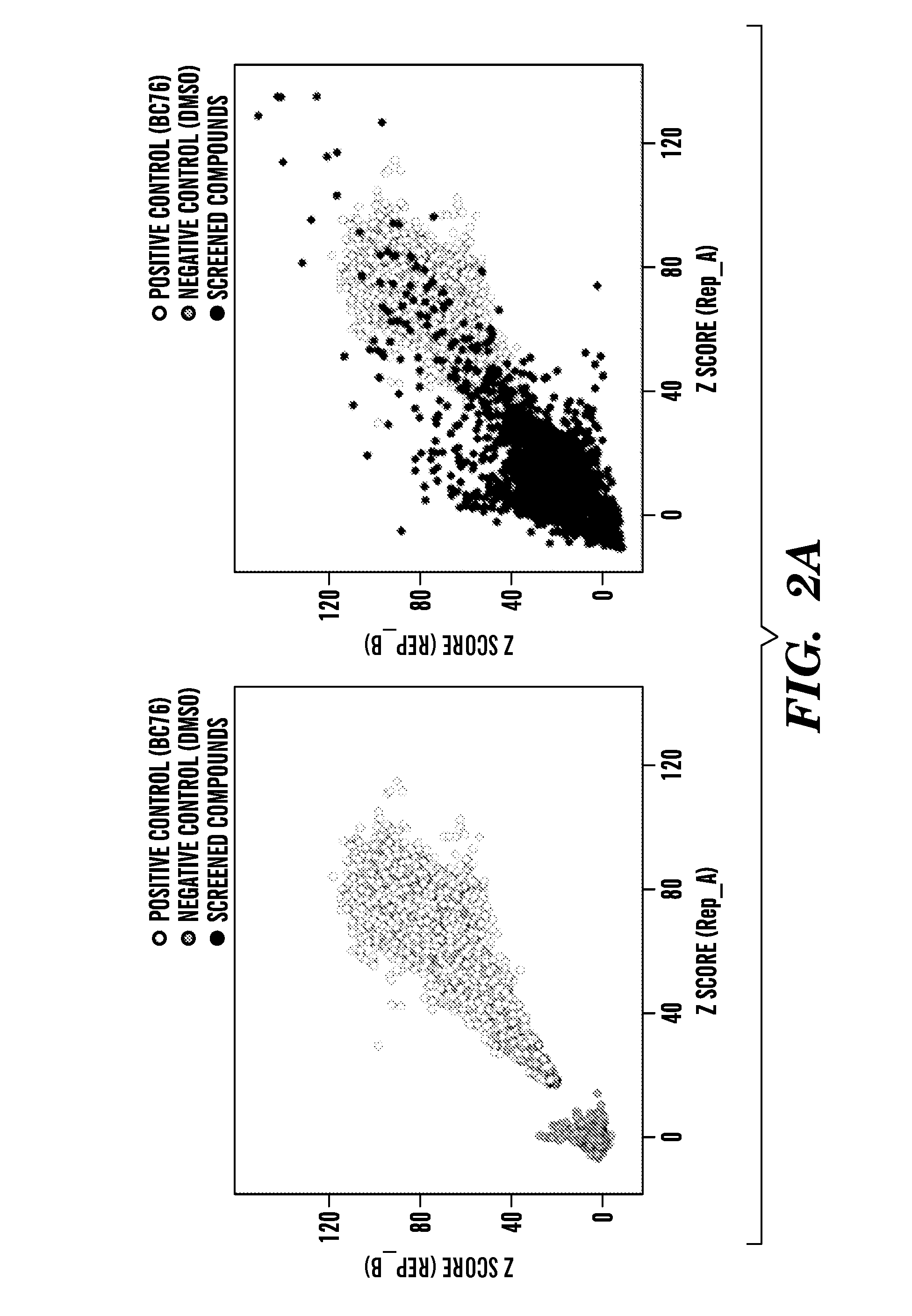Inhibitors of phospodiesterases 11 (PDE11) and methods of use to elevate cortisol production
- Summary
- Abstract
- Description
- Claims
- Application Information
AI Technical Summary
Benefits of technology
Problems solved by technology
Method used
Image
Examples
example 1
[0489]The second messengers cyclic AMP (cAMP) and cyclic GMP (cGMP) regulate a myriad of processes such as cell proliferation, differentiation, apoptosis, inflammation, hormone secretion, muscle contraction, and cognitive functions (1, 2). Intracellular cAMP and cGMP levels are determined by the balance between their synthesis by adenylate or guanylate cyclases and their degradation by phosphodiesterases (PDEs). In mammals, 21 genes encode >100 PDE isoforms that are grouped into 11 families based on their substrate-specificity, overall sequence conservation, and regulatory properties. The unique tissue-expression and subcellular-localization patterns of PDE enzymes, together with their diversity and differences in enzymatic properties, allow individual isoforms to control specific physiological functions and link them to different pathological conditions. Therefore, selective PDE inhibitors have the potential to provide therapeutic benefit to a wide range of diseases (1, 2)
[0490]PDE...
example 2
Selection of PDE11-Specific Inhibitors
[0499]The process by which the inventors analyzed 198,382 compounds to identify four PDE11-specific inhibitors is presented in FIG. 3A. Data from our previous screens for inhibitors of PDE8 (Demirbas, unpublished), PDE4, and PDE7 (24) was used to exclude nonselective PDE inhibitors and compounds that stimulate cell growth via PDE-independent mechanisms (FIG. 3A). For confirmation of hits and to further eliminate non-specific inhibitors, the top 595 hits (0.3% of the total number of compounds screened) were rescreened using strains expressing PDE11, PDE5 and PDE10 (PDE5 and PDE10 are the two PDEs most structurally similar to PDE11). While data from previous screens allowed the inventors to avoid many nonselective and off-target hits, a small group of these primary hits were found to inhibit PDE5 and PDE10 in the subsequent screens (Figure S3). From the compounds that promoted growth of the PDE11-expressing strain but not the PDE5- or PDE10-expres...
example 3
PDE11-Selective Inhibitors Elevate cAMP Levels and Cortisol Production in Adrenocortical Cells
[0501]PDE11 is expressed in adrenal glands, and PDE11-inactivating mutations, as well as elevated cAMP levels, have been identified in patients with adrenocortical tumors and Cushing syndrome, a condition resulting from excess cortisol release from adrenal tumors (18-21). This demonstrates the possibility that the phenotypes associated with PDE11 inactivation in Cushing syndrome (i.e., elevated cAMP and cortisol levels) could be mimicked by treatment of adrenocortical cells with the PDE11-specific inhibitors which were identified herein. To assess this, the inventors examined the effect of these compounds on H295R human adenocarcinoma cells (27). The inventors discovered that BC11-38 significantly increased cAMP levels and cortisol production in H295R cells, both in the absence and presence of the adenylatecyclase activator forskolin (FIG. 4). As a control, the nonselective PDE inhibitor IB...
PUM
| Property | Measurement | Unit |
|---|---|---|
| Length | aaaaa | aaaaa |
| Molar density | aaaaa | aaaaa |
| Molar density | aaaaa | aaaaa |
Abstract
Description
Claims
Application Information
 Login to View More
Login to View More - R&D
- Intellectual Property
- Life Sciences
- Materials
- Tech Scout
- Unparalleled Data Quality
- Higher Quality Content
- 60% Fewer Hallucinations
Browse by: Latest US Patents, China's latest patents, Technical Efficacy Thesaurus, Application Domain, Technology Topic, Popular Technical Reports.
© 2025 PatSnap. All rights reserved.Legal|Privacy policy|Modern Slavery Act Transparency Statement|Sitemap|About US| Contact US: help@patsnap.com



